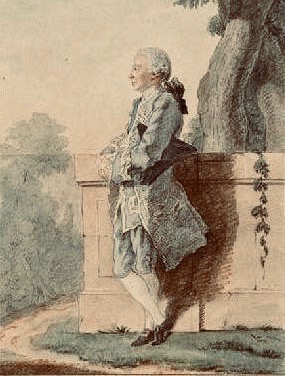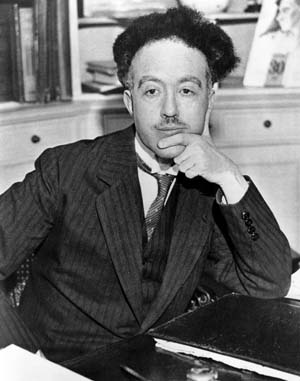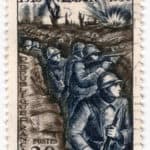This is the 17th in a series of articles that celebrate the lives of the Nobel Prize laureates whose names grace the 130+ streets of Laureate Park. These laureates are extraordinary individuals who through their lifetime achievements have made our daily lives immeasurably richer, often in ways not readily evident. Dr. Costas Efthimiou, professor of physics at the University of Central Florida, contributed to this article.

In our research over the past year, we have discovered that many a Nobel laureate grew up in humble circumstances, with some perched perilously close to economic misery. Others, if not exactly wealthy, were raised in families that enjoyed stable, middle-class incomes. As far as we know, though, hardly any Nobel laureates have been, well, noble. But of course, every rule attracts exceptions, and the exception is this case is Louis Victor Pierre Raymond de Broglie, seventh duc de Broglie, the 1929 Nobel laureate in physics who, at a young age, formulated the theory that electrons retain the characteristics of both particles and waves.
You’re probably already saying to yourself, “Why should decoding the nature of the constituent parts of atoms matter to anyone? And who cares if an electron is a wave or a particle?” To shed some light on those questions, we will need to peek into some historical context, first by dialing back three centuries to the work of Isaac Newton and then working our way forward to de Broglie’s 1924 Ph.D thesis.
As the founder of classical physics, Newton described the properties of gravity and motions of objects so precisely that his equations are still employed today for space travel. Less well known, however, is Newton’s considerable work on optics, where he posited that light, among other properties, is composed of particles he dubbed “corpuscles.” Given Newton’s unassailable intellectual stature, this basic understanding of light held for two centuries.
But scientists of the age showed increasing skepticism toward Newton’s corpuscles, and a prolonged debate ensued about the nature of light. In 1801, British polymath Thomas Young definitively ended that debate by demonstrating the wave properties of light through his famous – and still relevant – double-slit experiment. In this experiment, light is shone onto a back screen, before which stands a barrier with two vertical slits. If light were to be composed of particles only, one would expect to view two vertical strips of light on the back screen. Instead, the light shows scattering on the back screen, the result of wave interference.
Despite this demonstrable proof of the wave properties of light, a solid grasp of the true nature of light still eluded physicists at the dawn of the 20th century. Electrons had recently been discovered, and physicists naturally assumed that their behavior and motion would follow the laws of classical physics. But no physicist could solve what was known as the blackbody radiation mystery. You can think of a blackbody as a sort of box that absorbs all light. (The blackbodies used by physicists for experimentation are pitch-black rods inserted into cylindrical containers punctured by a tiny perforation at one end.) When heated, blackbodies emit radiation that evolves in color, from red to yellow to blue, as the temperature rises, along with waves invisible to the eye, such as those at ultraviolet frequencies. Among other behaviors, Newton’s laws predicted that the superheated “wiggling” electrons within blackbodies would emit increased energy as the frequency of the waves increased. But results of experiments showed otherwise. Instead, as the German physicist Max Planck calculated one September evening in 1900 in Berlin, the excited electrons emitted energy in discrete, predictable packets or “quanta,” whose behavior and motion could be predicted by applying a mathematical calculation that came to be known as Planck’s constant. By discovering the first objects in nature that defied the laws of classical physics, Planck had unwittingly created the field of quantum mechanics.
Few paid serious attention to Planck’s work until 1905, the annus mirabilis, when Albert Einstein, recognizing the importance of Planck’s discoveries, published a paper on the nature of light. I imagine Einstein in 1905 as a dithering diner struggling to decide if he should have the rösti potatoes or a bowl of müesli for a Swiss breakfast at his favorite Bern restaurant. A helpful server, on the hunt for an ample tip, suggests that he should order both. So he does. Ruminating upon Planck’s quanta, Einstein discovers that since light moves in packets, it must be made up of particles – but particles that also act as waves. In other words, the wave-particle duality, the best of both worlds.
A few years later, New Zealander Ernest Rutherford, working at the University of Manchester, uncovered the basic composition of atoms: an impossibly small but relatively weighty nucleus made up of protons and neutrons, around which whiz nearly weightless electrons. The precise nature and form of these electrons, and hence the shape of atoms, puzzled physicists until 1924, when Louis de Broglie quietly submitted his Ph.D. thesis. De Broglie figured that if light is composed of both waves and particles, then the same duality must apply to electrons and, in fact, to all matter of whatever size. (It turns out, though, that the wavelike properties of matter are only observable at the atomic level.)

De Broglie’s theories shook the scientific community. In one stroke, he had upended contemporary thinking about the shape of atoms and the nature of matter. His Sorbonne Ph.D. examiners, having no idea what to make of his strange and unsettling notions, waved a white flag and sent the thesis to none other than Albert Einstein, who straightaway gave de Broglie’s work an enthusiastic thumbs-up. In 1927, experiments conducted independently in the U.S. and Scotland demonstrated the veracity of de Broglie’s theories.
In the following decades, as a Sorbonne professor, de Broglie rubbed elbows with the most brilliant minds in physics as he continued to deepen our understanding of the fundamentals of quantum mechanics, a field that has since brought us a wide range of everyday products, including lasers, magnetic resonance imaging, and the entire computer industry.
At this writing, no one lives on Orlando’s Broglie Street. As homes rise at that spot and young families move in, should we let slip to our new neighbors the proper pronunciation of their street address? In French, the surname “Broglie” is pronounced something close to “Broy.” Maybe, though, we shouldn’t expect Americans to master French pronunciation just to name the street where they live, since the French themselves often apply exotic pronunciations to U.S. geographic names. But the more curious of our new neighbors might nonetheless wonder why the first half of Louis’s last name has gone missing from the Broglie Street sign. (A hypothetical Louis Broglie would normally be an ordinary citizen while Louis de Broglie is a duke.) People might well hold differing views about the relative value of dukes versus Nobel laureates, and I will keep myself at arm’s length from that debate. Yet it is instructive to reflect that, like the dual nature of matter he studied so closely, Louis de Broglie was both duke and laureate, even if Laureate Park seems to have accidentally demoted our duke to commoner.
To right that unintentional slight, we might show our gratitude to the House of Broglie not only for the achievements of the seventh duke in physics but also for that clan’s contribution to our founding as a nation. It turns out that one of de Broglie’s forebears,
Charles-François de Broglie, son of the first duc de Broglie, arranged a dinner in Metz in 1775 where the young Marquis de Lafayette was persuaded to join the struggle for American independence. The rest, as we know, is history.
Next month: Jacinto Benavente, Madrilenian Dramatist o un Dramaturgo Madrileño
Photos Courtesy of Wikimedia Commons



Challenging but interesting.
De Broglie’s PhD work was excellent. Not only he found the duality of the electron’s duality character but also the connection between the time and the space. For ordinary people like President Trump, he would understand more the latter.